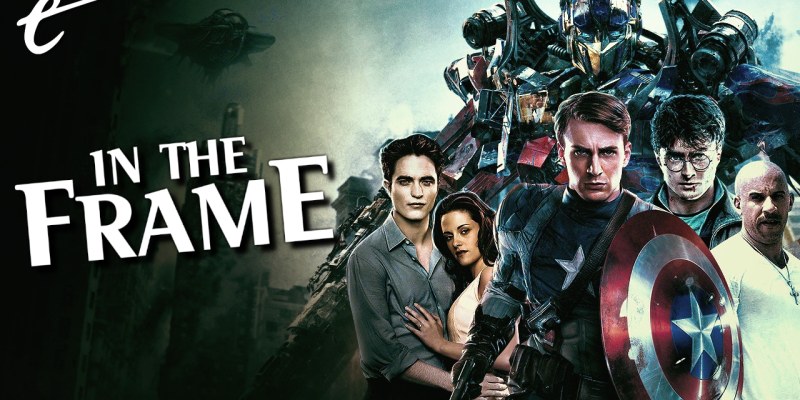Ten years ago, summer movies changed forever, birthing the modern blockbuster era.
Of course, most histories of Hollywood would argue that the seismic shift took place in either 2008 or 2012. These are both good options. 2008 remains one of the best cinematic summers in living memory. Coming out of an awards season that included There Will Be Blood, No Country for Old Men, and Atonement, the year saw the release of The Dark Knight, Wall-E, Iron Man, Kung Fu Panda, Step Brothers, Cloverfield, Hellboy II: The Golden Army, Forgetting Sarah Marshall, and many more.
Sure, there were misfires. This was also the summer of Indiana Jones and the Kingdom of the Crystal Skull, The X-Files: I Want to Believe, The Mummy: Tomb of the Dragon Emperor, and even The Happening. However, there’s no denying that the summer of 2008 was hugely influential. The awards snub of The Dark Knight and Wall-E would change the Oscars forever. The combined success of both The Dark Knight and Iron Man would redefine what superhero cinema could be.
Indeed, that redefinition would pay off four summers later in 2012. Iron Man and The Dark Knight had been the two biggest movies of 2008, and it feels fitting that The Avengers and The Dark Knight Rises would be the two biggest movies of 2012. The Avengers proved that the Marvel Cinematic Universe established in Iron Man was a blockbuster behemoth that could make Hollywood quake. The Dark Knight Rises provided a bold artistic statement on what Batman could be.
So, with all that in mind, what is so special about the summer of 2011? Why is the summer of 2011 so crucial in the evolution of the Hollywood blockbuster, particularly with these two exceptional years either side of it? The answer is in the question. 2008 and 2012 were exceptional summers. They were earthquakes that shattered the status quo for big-budget filmmaking. In contrast, 2011 was the year that the innovations and revelations of 2008 became business as usual.

Hollywood moves slowly, particularly in terms of film production. Big summer blockbuster films are complicated, slow, and expensive. The process often involves extensive pre- and post-production. As a result, films tend to reflect larger trends a bit slower than the weekly grind of network television, for example. The West Wing could respond to the events of 9/11 within a month of the attacks with a special episode, but it took about four years for blockbusters like War of the Worlds to engage with it.
There are exceptions, but – as a rule of thumb – it takes Hollywood blockbusters about three years to learn from past successes. Historically, before the modern franchise boom, sequels would arrive at roughly three-year intervals. Each of the original Star Wars films was released three years apart – 1977, 1980, 1983. Rocky II, Rambo: First Blood Part II, Star Trek II: The Wrath of Khan, and Indiana Jones and the Temple of Doom all arrived three years after the original entries in their franchise.
Even outside of sequels, it generally takes about three years for Hollywood studios to latch on to successes. In 1995, Toy Story changed the rules, demonstrating that it was possible to make family-friendly computer-generated animation. By 1998, that kind of animation was becoming more common. Pixar released its follow-up, A Bug’s Life. DreamWorks released its first animation, Antz. Joe Dante’s Small Soldiers was more overt in its homage to Toy Story.
By 2011, the lessons learned from the success of both Iron Man and The Dark Knight were being applied much more widely across the Hollywood ecosystem. Looking at the blockbusters of that year, even outside the superhero genre, there was a sense that Hollywood was at the end of an era. Many of the blockbusters of the year have an elegiac feel to them, late installments in franchises that were either past their prime or reaching transitory points.

Harry Potter and the Deathly Hallows – Part 2 and The Twilight Saga: Breaking Dawn – Part 1 were among the biggest movies of the year, splitting the finales as a way of extending the profitability of the Harry Potter and Twilight franchises just a little further. Transformers: Dark of the Moon closed the opening trilogy of Transformers films, the last with Shia LaBeouf and Megan Fox. Pirates of the Caribbean: On Stranger Tides was a coda to the Pirates of the Caribbean trilogy, the first without director Gore Verbinski or stars Orlando Bloom and Keira Knightley.
The franchises that emerged from the summer of 2011 turbo-charged and ready for action were those that took note of the shifting landscape and adapted. Fast Five remains the best film in the Fast & Furious franchise and reinvented the series by turning “its characters into de facto superheroes.” More than the Transformers or Pirates of the Caribbean sequels, Fast Five had read the temperature of the room and adjusted accordingly.
Even the comic book movies were in a process of adjustment. The summer of 2011 marked the point at which Marvel Studios perfected its superhero formula. The company had announced its arrival with Iron Man in 2008. It followed this up with a direct sequel two years later. Iron Man 2 remains one of the weakest-reviewed films in the larger franchise, described at the time and in retrospect as a “misfire” for the nascent studio.
However, the company’s 2011 blockbusters performed considerably better. Thor and Captain America: The First Avenger both demonstrated that the company had a reliable framework that it could apply to superhero storytelling and that the studio could churn out multiple franchise entries within the same year without sacrificing quality or box office. With the success of both Thor and Captain America, Marvel Studios paved the way for its impending content explosion.

2011 was also the year that other companies began to look to Marvel Studios as an example of how comic book movies should be made and, more importantly, how these sorts of intellectual properties should be managed. That summer, Warner Bros. made its first effort to launch a shared cinematic universe – a project that would come to be labeled the DC Extended Universe – with Martin Campbell’s ill-fated Green Lantern.
While there had been rumors for years about a movie that might bring Batman and Superman together or a Justice League movie, Green Lantern was the first time that a Warner Bros. superhero project was constructed with universe-building in mind. Early drafts included a cameo from Clark Kent, and director Martin Campbell insisted in interviews that the project would be “much more like Iron Man” than earlier DC films like Batman Begins. It was a critical and commercial embarrassment.
Similarly, 2011 was the year that Fox substantially retooled its own X-Men franchise. Fox had helped to launch the previous decade’s superhero boom with Bryan Singer’s X-Men, but Matthew Vaughn’s X-Men: First Class pushed the franchise in a direction much more inspired by the success of The Dark Knight and Iron Man. First Class was co-written by Thor writers Ashley Miller and Zack Stentz, while Vaughn had even been considered to direct Thor.
While the earlier X-Men movies had embraced their own science fiction aesthetic with black leather costumes and a cool metal look, First Class embraced a much more colorful aesthetic. While Cyclops (James Marsden) joked about “yellow spandex” in the original X-Men, First Class put the characters in costumes that were much more faithful to their comic book appearances. Even beyond that, as was increasingly the style, Vaughn had a long-term plan for the universe.

To get a sense of how profoundly things had changed in Hollywood, one need only look outside the bigger comic book properties. Other studios tried to cash in on this wave of the superhero boom. Green Hornet released in January, a weird revival of the cult property directed by Michel Gondry and starring Seth Rogen. Universal also gambled on Cowboys & Aliens, an adaptation of a 2006 comic book from Iron Man director Jon Favreau that was heavily sold at 2011’s San Diego Comic-Con.
As with most lasting revolutionary moments, the changes that came into effect in 2011 were overshadowed by the payoffs that came down the line. Thor and Captain America fade into the background when considering the novelty of Iron Man or the success of The Avengers on either side of them. Green Lantern is a movie rightly forgotten. Green Hornet and Cowboys & Aliens were disasters in every sense. Even Fast Five has been somewhat eclipsed by the sequels that built on it.
Still, looking back a decade, the foundations of the modern blockbuster landscape were laid down over the summer of 2011. Hollywood had taken three years to process the earth-shattering innovations of Iron Man and The Dark Knight and to reverse-engineer or mass-produce what had made those movies breakout hits. The summer of 2011 wasn’t quite as groundbreaking as the one three years prior, but that is the point. This was just what blockbusters looked like now.
